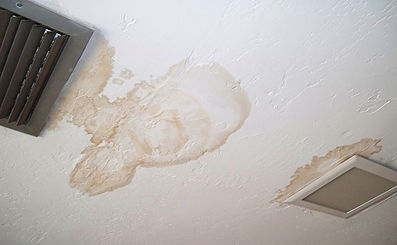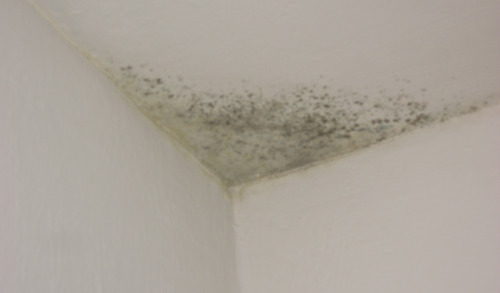Locating Stains from Water on Walls - Techniques to Fix Them Adequately
Locating Stains from Water on Walls - Techniques to Fix Them Adequately
Blog Article
This post which follows involving Indicators of Water Damage Behind Walls is pretty much captivating. Don't bypass it.

Water discolorations on wall surfaces are not positive to the eyes. Your residence must be without spots on the walls, roof covering, or floorings. That is the suitable state of a house and its frameworks. Yet, occasionally it appears almost unpreventable to experience water spots on walls in homes.
Home owners living in moist regions continuously deal with the fear of water discolorations on walls. With well-shaped as well as accurate details on the reasons of water discolorations and timely repair service procedures, you will constantly be an action ahead of such incidents.
3 Usual Reasons For Water Spots on Wall Surfaces
Unlike popular belief, water stains on walls do not always come from bad structure products. There are numerous sources of water discolorations on wall surfaces. These consist of:
Moist
When hot wet air meets with completely dry cool air, it triggers water droplets to base on the wall surfaces of buildings. When there is heavy steam from cooking or showers, this happens in shower rooms and also kitchen areas. The water beads can stain the surrounding walls in these parts of your residence and spread to various other locations.
Damp or condensation impacts the roofing system and also wall surfaces of structures. When the wall surface is wet, it creates an appropriate setting for the development of germs and also fungis.
Poor Drain
This will prevent water from permeating into the wall surfaces. This web links to extreme moisture that you notice on the wall surfaces of your building.
So, the leading source of damp walls, in this case, can be a bad drain system. It can likewise result from poor monitoring of sewer pipelines that run through the structure.
Pipe Leaks
Many houses have a network of water pipelines within the walls. It constantly increases the practicality of such pipelines, as there is little oxygen within the wall surfaces.
A disadvantage to this is that water leakage influences the wall surfaces of the building and triggers extensive damage. A telltale sign of faulty pipelines is the look of a water discolor on the wall.
Pro Suggestion
A houseplant in your home additionally boosts its humidity. If the residence is already humid, you might desire to introduce houseplants with minimal transpiration. An example of appropriate houseplants is succulents.
Water Spots on Wall: Repair Tips
Property owners would typically want a quick fix when taking care of water stains. They would certainly soon recognize this is counterproductive as the water discolorations recur. Right here are a couple of helpful suggestions that will assist you in the fixing of water stains on wall surfaces:
Conclusion
No one desires to have water spots on walls in their residence, it can happen to the best of us. This short article gives you take advantage of, as you now know exactly how to manage this accident if it does take place.
It is constantly best to recruit professional services to help fix the problems in your house.
Often it seems almost unavoidable to experience water spots on walls in residences.
Contrary to prominent belief, water discolorations on walls do not always stem from poor structure products. There are numerous reasons of water stains on walls. The water beads can discolor the surrounding wall surfaces in these parts of your home as well as spread to other locations.
Here are a couple of practical tips that will guide you in the repair of water spots on wall surfaces:
CHECKING FOR WATER DAMAGE
Water damage can be costly, and it may begin before you even notice the first signs of trouble. Water damage can cause mold and mildew in your walls and floors, which can create an abundance of health concerns for your family. It can also lead to costly repairs of various appliances and general home fixtures. To avoid the pricey consequences of water damage, here are Warner Service’s top 5 places you should check:
The walls – The easiest place to spot the beginnings of water damage is on the walls and ceilings of your home. If water damage is present, there will most likely be water stains, especially around the windows and doorframes, and/or cracks in the drywall. If a stain looks unusual (discolored to brown, black or gray, raised texture), has a swollen appearance or is soft to the touch, contact a professional immediately. The pipes – To avoid water damage, consistently check the pipes in your kitchen (especially the dishwasher and ice maker), bathrooms, laundry room (specifically washing machines) and basement for corrosion, leaks and water stains. Pay special attention to where the pipes connect in your home and the location of caulking around the bathroom fixtures, including toilets, sinks, showers and tubs. Missing or loose caulking and grout could be signs of leaking water. This seepage can also quickly cause mold and rust, so double check your water heater and tank for wet spots on the floor. The floor – Water damage is very easy to spot on the floor. Look for any warping or buckling of the material, especially in the basement. If your home has wood flooring, look for bright white or dark stains. If your home has carpeting, keep it dry and clean. A damp carpet that smells of mold could cause water damage and health problems. To avoid this, consider installing floor pans under your appliances to help prevent damages from small, slow and undetected leaks. The basement and attic – If your basement or attic smells odd check for mold and mildew around the area, especially the valley where the roof meets. While you are inspecting those areas, check for wall cracks, floor stains, rust and dampness in the insulation. If you live in a colder and/or rainier climate, perform routine checks for water damage from melting snow or ice and rain. The exterior – Check the roof for damaged flashing and missing, cracked or curled shingles. There should also be no standing water anywhere outside your home. This could be caused by puddles, leaky rain gutters or hoses, poor drainage, or short gutter spouts. Invest in a sump pump system or water flow monitoring system, and perform routine maintenance on these outdoor appliances to avoid indoor water damage.

I was made aware of that article about from an associate on another domain. Those who liked our blog post plz don't forget to share it. Thanks so much for going through it.
Get Your Estimate Now Report this page